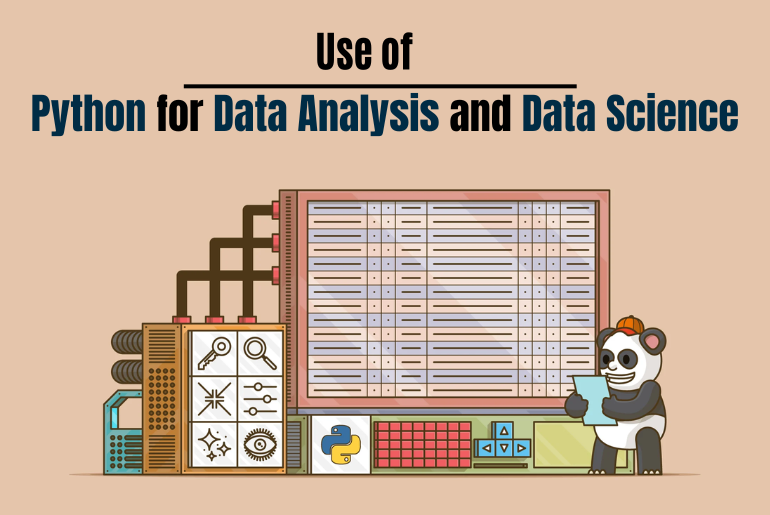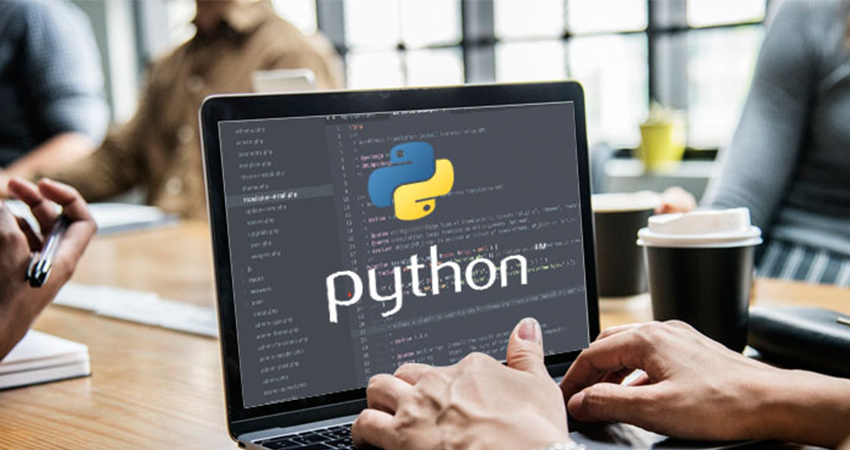Python is a broadly useful programming language, which means it tends to be utilized in the advancement of both web and work area applications. It’s additionally valuable in the advancement of complex numeric and logical applications. With this kind of adaptability, Python is one of the quickest-developing programming languages being used in the world. Let’s discuss the use of python for data analysis and data science.
Python is characterized to be a deciphered, object-oriented language that is used for designing code with charismatic interpretation. Its significant level inherent data structures, joined with dynamic composing and dynamic official, make it exceptionally appealing for Rapid Application Development, just as for use as a scripting or paste language to associate existing parts.”
Information Science has become a well-known subject opening a crisp cluster of conceivable outcomes for future information designers and researchers. Business Intelligence is a subordinate of information modernization which is transforming crude information into a benefit, in this way expanding its utility in 2020. It is the quickest method to accomplish Artificial Intelligence-driven modernization to source every one of the information issues to the business and convey venture-wide insight. It changes information into an advantage.
Information Modernization enables pioneers to use information as an essential resource for the organization and helps drive income, and development, contain costs, and reinforce corporate valuation.
Now the question here arises how does Python harmonize with data analysis? We will be taking a firm look with respect to why this adaptable programming language is an absolute necessity for any individual who is looking for a career in data analysis today or is searching for an intensive platform for upskilling his /her skills.
Use of Python for Data Analysis and Data Science

What is Data Analysis?
Data Analysts are answerable for deciphering information and breaking down the outcomes using measurable strategies and giving progress reports. They create and execute information investigations, information assortment frameworks, and different techniques that streamline factual productivity and quality. They are likewise liable for gaining information from essential or optional information sources and looking after databases.
Additionally, they analyze, dissect, and decipher patterns or examples in complex sets of data. Therefore data analysts audit PC reports, printouts, and execution pointers to find and address code issues. By doing this, they can channel and clean information.
One just needs to quickly look over this rundown of information substantial errands to see that having an instrument that can deal with mass amounts of information effectively and rapidly is outright. Thinking about the expansion of Big Data it is critical to have the option to deal with gigantic measures of data, tidy it up, and process it for use. Python possesses all the necessary qualities since its effortlessness and simplicity of performing tedious errands imply less time should be dedicated to attempting to make sense of how the tool functions.
Reasons Defining Why Python is important for Data Analysis?
The reasons justifying why Python is necessary for data analysis are:
Adaptability:
If you are willing to try something innovative and creative that has never been implemented, Python is the right technology for turning your thoughts into reality.
Effortless learning:
Because Python emphasizes effortlessness and intelligibility, it flaunts a steady and generally low expectation to absorb information. This simplicity of learning makes Python a perfect apparatus for starting software engineers. Python offers software engineers the upside of utilizing fewer lines of code to achieve undertakings than one needs when utilizing more seasoned dialects. You invest more energy playing with it and less time managing code.
Open space:
Python is open-source, which implies it’s free and uses a network-based model for improvement. Python is intended to run on Windows and Linux operating systems. Likewise, it can be ported to numerous platforms without much of a stretch. There are many open-source Python libraries. So, to conclude, Python is not difficult to use, and to help the user, appropriate repositories can be used in case any issue arises.
How is Python used for Data Science?
Data Science is principally used to change significant information into showcasing and business procedures that help an organization to develop. It has crossed across different business parts including web-based business, medicinal services, shipping, and so forth. Apparatuses that make it stunningly better. Other than these, one of the most well-known apparatuses in Big Data Real-Time Analytics is Python. It bolsters organized programming and object-oriented programming. You can hire Python developers for your projects.
Reasons that justify why Python is the best fit for Data Science?
- It is more effective and easy to use.
- It is currently used in many industries, such as finance, insurance, banking, etc.
- Python has been a back-end tool for strengthening the architecture of the application. For example, YouTube (An application of Google) was developed using Python.
- It can be easily adapted and is open-source.
- Have large repositories and resources which can be used by developers.
- It reduces the time spent on investigating codes and also reduces different programming building requirements.
- While comparing with other programming languages like C, C#, Java, and so forth Python takes less time to execute the code.
- Getting the necessary information with the assistance of Python libraries like Scrapy and Beautiful Soup and so on.
- To fetch the graphical portrayal and perception of the information with the assistance of Python libraries like Seaborn and Matplotlib.
Conclusion:
Different forms of data that need to be interpreted required various Python frameworks and libraries for reference. Hence we at Developer Per Hour hold immense experience in developing various applications for both web and mobile with quick delivery time and reduced data cost. We have a talented pool of professionals who can identify and understand the client’s requirements and ensures the quality of the product being delivered.
FAQs:
As a data analyst, you can use Python for data cleaning, preprocessing, visualization, analysis, machine learning, web scraping, and task automation.
To learn data analysis with Python, start with tutorials & courses on Python programming, then learn the key libraries such as Pandas, Numpy, Matplotlib, Seaborn, and sci-kit-learn. Practice with real-world datasets and participate in Kaggle challenges. Keep learning and experimenting.
We use Python for data analytics because it has a vast ecosystem of powerful libraries, such as Pandas, Numpy, Matplotlib, Seaborn, and sci-kit-learn, which make data cleaning, preprocessing, visualization, analysis, and machine learning easy and efficient. Python is also easy to learn and use.
Use Excel for data analysis when working with small datasets, when the data doesn’t require heavy computations or statistical analysis, and when creating simple charts or pivot tables. Use Python for larger datasets, more complex computations, and advanced visualizations.




